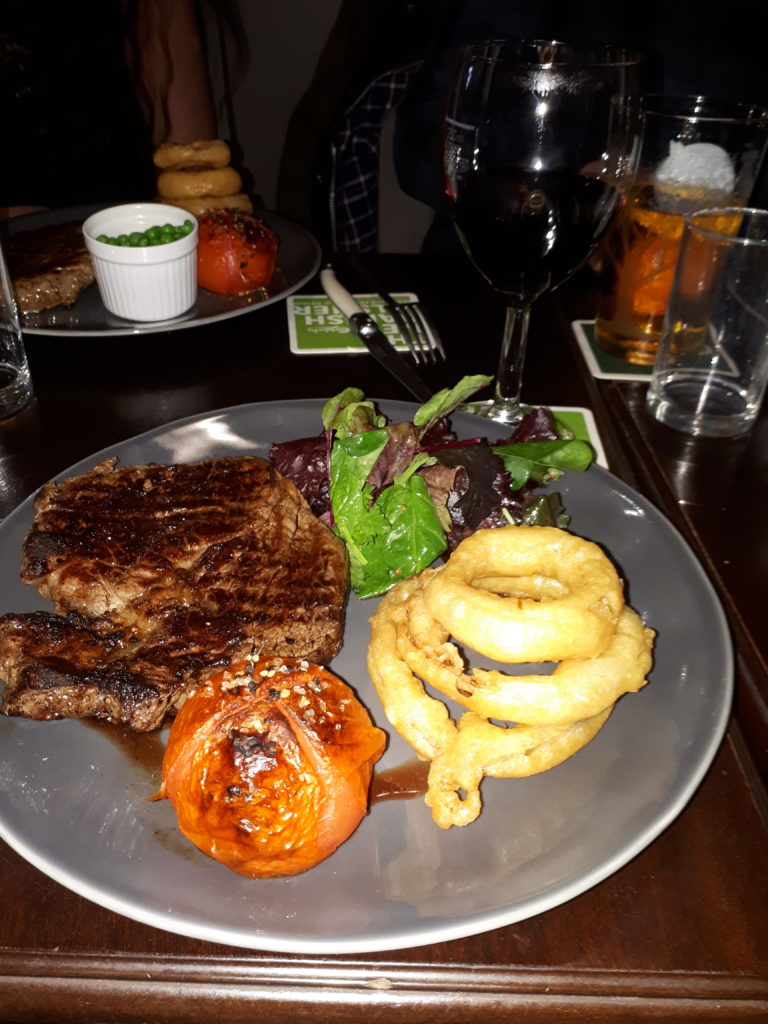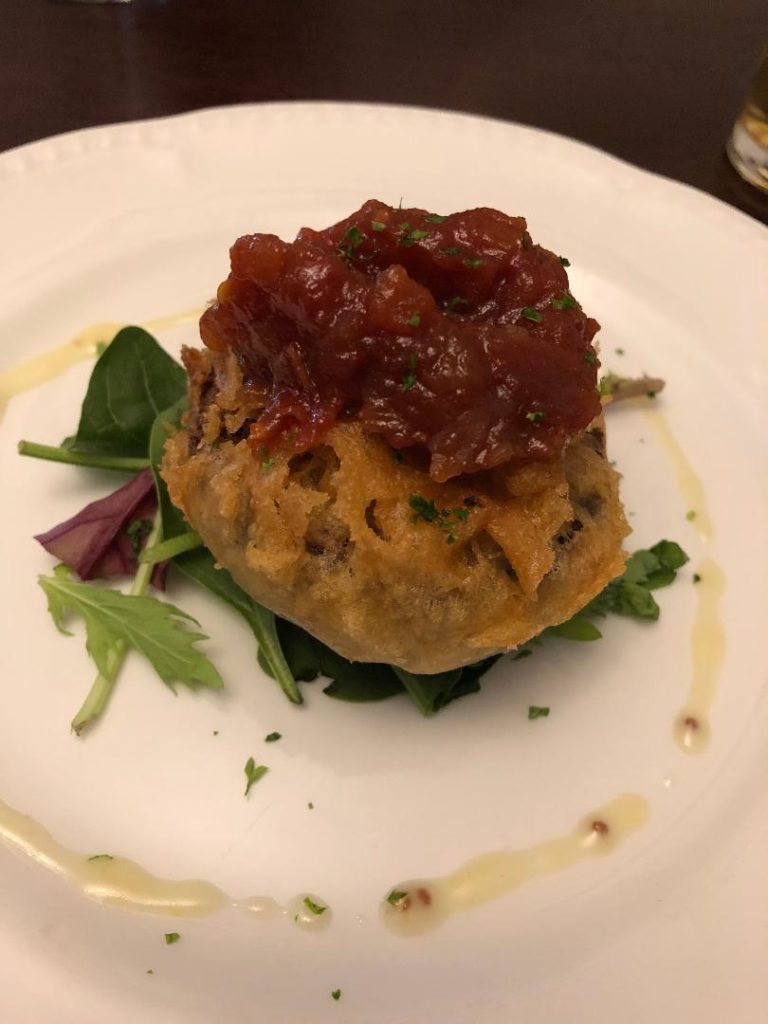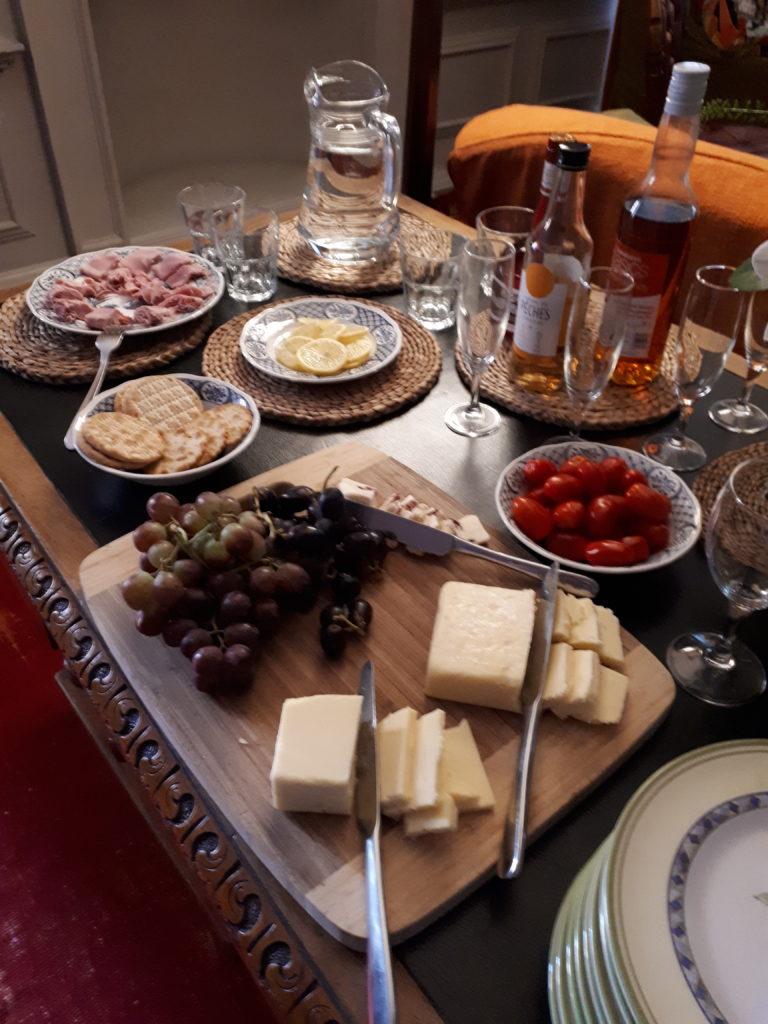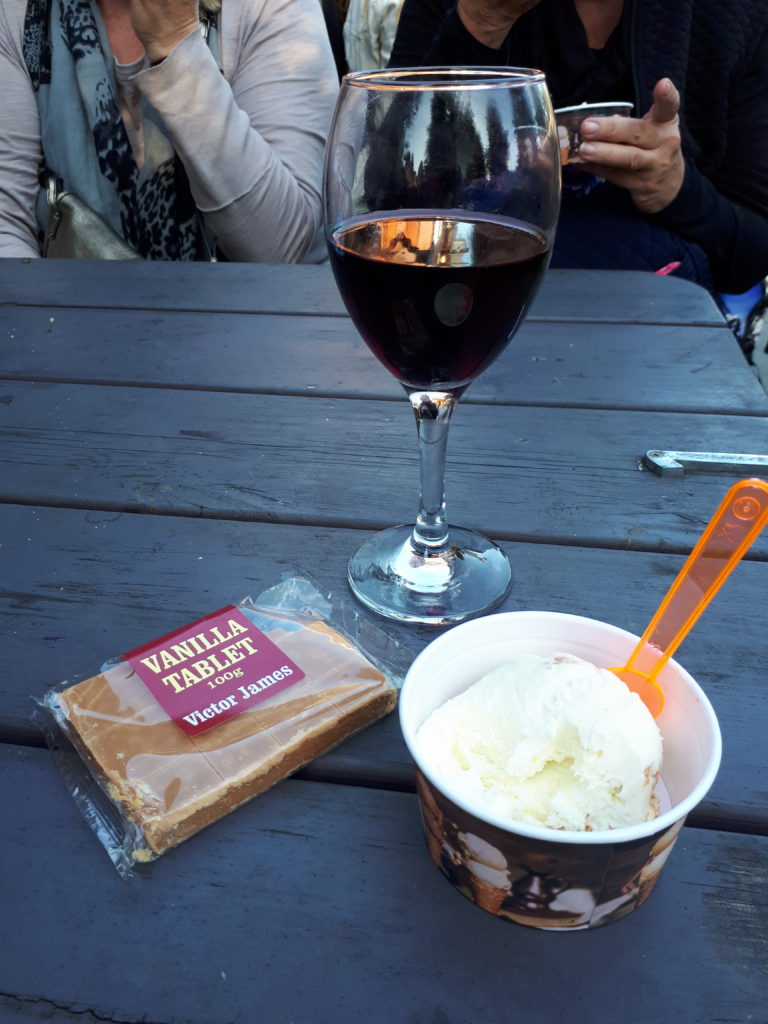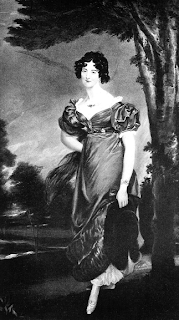It took 50 years from the invention of the telephone to make transatlantic phone calls possible, as there was much more than the mere laying of a cable to achieve the feat, since the voltages involved in telephone calls were too low to be passed though such a long cable and there was no known technology for underwater repeater amplifiers. It wasn’t until the wireless was invented that across the pond communication became possible. Bell System engineers achieved the first voice transmission across the Atlantic, connecting Virginia and Paris briefly in 1915. A year later they held the first two-way conversation with a ship at sea. However, these were just experimental demonstrations and it wasn’t until 7 March 1926 that the first transatlantic telephone call, from London to New York, was completed. The first commercial telephone service, using radio, began on January 7, 1927, between New York and London. The initial capacity was one call at a time at a cost of $75 for the first three minutes.
A TOUR GUIDE IN ENGLAND: WALKING HIGHCLERE
Kristine here – As some of you may recall, before the 2010 Wellington Tour began, I had posted about how much I was looking forward to walking the grounds at Highclere Castle, which was a stop on the Tour. As depicted on Downton Abbey, the grounds always seem interesting, inviting and in need of my closer perusal. When we visited, I had the opportunity to set off by myself and to simply take in the gardens, the countryside and the grounds. I’ve remembered that day many times since and thought I’d post about it again.
Here, I offer you just a few of the views I was fortunate enough to encounter. Can you spot the one photo I didn’t take myself?
THE TWO LADY JERSEYS
Originally published in 2010
There were two Lady Jerseys during the Regency, Frances, Lady Jersey and her daughter-in-law, Sarah, Lady Jersey, who became one of the Lady Patronesses at Almack’s Assembly Rooms. The elder, and more infamous, Lady Jersey was Frances Twysden, the posthumously born daughter of Rev.Philip Twysden, Bishop of Raphoe (1746–1752) who was allegedly shot while attempting to rob a stagecoach in London(!), and his second wife Frances Carter, daughter of Thomas Carter of Robertstown, Master of the Rolls. Her disreputable father was the third son of Sir William Twysden, 5th Bart of Roydon Hall, by his wife and distant cousin Jane Twisden.
When Frances was seventeen, she married George Villiers, 4th Earl of Jersey, son and heir of William Villiers, 3rd Earl of Jersey and his wife, Lady Anne Egerton. Frances’s husband was nearly twenty years older than she and was Master of Horse to the Prince of Wales and a Lord of the Bedchamber. The reason for the marriage of Lord Jersey to the daughter of a disreputable Irish bishop has not been explained in contemporary accounts. However, her husband’s position within the Royal household soon placed Lady Jersey in close proximity to the Prince of Wales and led to Lady Jersey being well placed for undertaking future mischief.
George IV began his affair with Frances, Lady Jersey, in 1782, although she would also become romantically involved with various members of the English aristocracy. It was not until 1794 that Lady Jersey managed to lure the Prince of Wales away from his illegal wife, Maria Fitzherbert, although he would continue to be romantically involved with Maria until 1811. Having helped to encourage the Prince of Wales to marry his first cousin, Caroline of Brunswick, Lady Jersey nevertheless set out to make Caroline’s life difficult, perpetrating what vies to be the greatest piece of cheek in Regency history, Lady Jersey had herself appointed as Lady-in-Waiting to Princess Caroline. Losing no time in stirring the pot, Lady Jersey met Princess Caroline when she landed at Greenwich on April 5th, 1795 – arrivng late. She then proceeded to usurp the Princess’s rightful place in the Royal carriage by plead motion sickness whenever she rode backwards, thus forcing the Princess to give up her seat in the place of honour.
However Caroline, the potential Queen Consort, saw through the intrigues of her husband’s mistress and, there being no love lost between Caroline and the Prince of Wales, soon cared very little about the matter. In fact, after the birth of their child together, Caroline lived abroad for most of her 25 year marriage to him, taking other lovers, and therefore leaving a void Frances could fill. Because Lady Jersey enjoyed the favour of Queen Charlotte, even the displeasure of George III was not enough to threaten Lady Jersey’s position, and she continued to run the prince’s life and household for some time.
It might be said that Lady Jersey’s reputation for intrigue and malice led to her downfall. The following contemporary letters offer further insight into her personality.
On July 6, 1803, diarist Joseph Farrington wrote: “Lady Jersey is now quite out of favour with the Prince of Wales. She told Hoppner that she met the Prince upon the stairs at the Opera House, & in such a situation as to render it necessary to make room for him to pass which not instantly noticing him she did not do as she wished, which caused Her after He had passed to say a few words of apology. He went forward, and the next day Col. McMahon called upon her to signify to Her `that it was the desire of the Prince that she would not speak to him.’ She spoke bitterly of McMahon for having submitted to carry such a message. She says there is a popish combination against her. (McMahon was Private Secretary and Keeper of the Privy Purse to the Prince of Wales, as well as being a Privy Councilor. He was created a Baronet on August 7, 1817).
Frances, Lady Jersey, died on July 23, 1821, in Cheltenham. Her daughter-in-law, Sarah, Lady Jersey, was much more beloved by society. Sarah, Lady Jersey, the Lady Patroness who introduced the Quadrille to Almack’s Assembly Rooms and who is Zenobia in Disraeli’s Endymion, was the daughter of John Fane, the 10th Earl of Westmorland, who had scandalously eloped with her mother, the heiress Sarah Ann Child, a member of the Child’s banking family. Born Lady Sarah Sophia Fane, the younger Lady Jersey married George Villiers, the 5th Earl of Jersey, then Viscount Villiers, on 23 May 1804. He succeeded to the title in 1805 and until her death in 1867, Lady Jersey, who lived in Berkeley Square, was the undisputed Queen of London Society, being called, in fact, “Queen Sarah,” although she styled herself as Sally.
Sir William Fraser described her thusly in later life, “Lady Jersey was never a beauty. She had a grand figure to the last; never became the least corpulent, and, to use a common term, there was obviously no “make up” about her. A considerable mass of grey hair; dressed, not as a young woman, but as a middle-aged one. Entirely in this, as in other things, without affectation, her appearance was always pleasant. No trace of rouge nor dye could ever be seen about her. She seemed to take her sovereignty as a matter of course; to be neither vain of it, nor, indeed, to think much about it. Very quick and intelligent, with the strongest sense of humour that I have ever seen in a woman; taking the keenest delight in a good joke, and having, I should say, great physical enjoyment of life.”
After her parents had eloped, Lady Sarah’s grandfather, Robert Child, sought to confound the newlyweds by preventing any of his fortune from going directly to his daughter or the Westmorland family, which he disliked intensely. He made a will leaving the whole of it to any daughter that might be born to the couple. Sarah became an heiress upon his death, inheriting not only his banking fortune, but Osterley Park as well.
On July 6th, 1825, Mrs. Arbuthnot wrote the following complaint about Lady Jersey: “I was very cross at the King’s ball, I was so provoked with Lady Jersey. In the first place, she was chaperone to Miss Ponsonby, who is just come out & very shy & who she left entirely to herself & took no notice of, while she went about flirting with every man she could get hold of. Miss Ponsonby came & staid with me & protested she would never go to a ball again with Lady Jersey.
 Perhaps one of Lady Jersey’s most constant adversaries was Princess Lieven, who wrote of one of their many skirmishes on August 23, 1823: “I see that you like Lady Georgina Wellesley (Lady Cowley, sister-in-law to the Duke of Wellington); I can imagine that you would. She has plenty of good sense. We have never been very intimate but we were always good friends. She is said to like gossip. I have never found out if she deserves the reputation. I am so far from having that fault, and generally I am so quickly bored with trivialities, that it s rare for anyone who is endowed with a little tact not to realize immediately that this is the kind of conversation I like least. So she might well be a gossip without my knowing it. She has given you a garbled and abridged version of the mischievous stories Lady Jersey tired to spread about me; and Lady Jersey has the most dangerous tongue I know. I will not bore you, and myself, with the whole truth; but I cannot leave you under a false impression. Here is what happened in the end. She wanted to have it out. There was no way of escaping. She talked and wept for an hour on end. The sound of her voice and her vulgar way of talking upset me so much that I felt almost sea-sick; incidentally, I was quite incapable of understanding what she was trying to say. So, to be done with it, I said: “Tell me, in a word, if you have come to make peace. If so, I am ready; if you have come to declare war, I accept the challenge.” That brought on a fit of hysterics and frightful reproaches for my coldness. “Is it possible to say such freezing things to one’s friend?” In the end, I really believe I drove her out, for I was beside myself. So here we are friends or enemies, just as she likes; for, once again, it doesn’t matter to me, so long as I am left in peace.”
Perhaps one of Lady Jersey’s most constant adversaries was Princess Lieven, who wrote of one of their many skirmishes on August 23, 1823: “I see that you like Lady Georgina Wellesley (Lady Cowley, sister-in-law to the Duke of Wellington); I can imagine that you would. She has plenty of good sense. We have never been very intimate but we were always good friends. She is said to like gossip. I have never found out if she deserves the reputation. I am so far from having that fault, and generally I am so quickly bored with trivialities, that it s rare for anyone who is endowed with a little tact not to realize immediately that this is the kind of conversation I like least. So she might well be a gossip without my knowing it. She has given you a garbled and abridged version of the mischievous stories Lady Jersey tired to spread about me; and Lady Jersey has the most dangerous tongue I know. I will not bore you, and myself, with the whole truth; but I cannot leave you under a false impression. Here is what happened in the end. She wanted to have it out. There was no way of escaping. She talked and wept for an hour on end. The sound of her voice and her vulgar way of talking upset me so much that I felt almost sea-sick; incidentally, I was quite incapable of understanding what she was trying to say. So, to be done with it, I said: “Tell me, in a word, if you have come to make peace. If so, I am ready; if you have come to declare war, I accept the challenge.” That brought on a fit of hysterics and frightful reproaches for my coldness. “Is it possible to say such freezing things to one’s friend?” In the end, I really believe I drove her out, for I was beside myself. So here we are friends or enemies, just as she likes; for, once again, it doesn’t matter to me, so long as I am left in peace.”
Perhaps Lady Jersey’s greatest misstep was to draw the displeasure of the Duke of Wellington. On March 9th, 1832, Lady Holland wrote to her son: “You know that he (the Duke of Wellington) never goes near Ly Jersey, a complete alienation.” And again on August 2nd, 1845, Lady Holland writes to him: “Yesterday the Beauforts gave a dinner to the King of Holland, quite one of form and etiquette. The D. of Wellington was to take out according to precedence, Ly G. Coddington as a Duke’s daughter. Lady Jersey bustled up, shoved her off, and said to the Duke, “Which will you take?” He very gravely and properly kept to his destined lady, without answering Lady Jersey. They say she is really too impudent and pushing.”
 A prime example of the manner in which the Duke of Wellington dealt with those with whom he had no patience is demonstrated by the following anecdote I found on the Villiers family website, The Jersey Cup . On one occasion, the Duke had been invited to Lady Jersey’s home at 28 Berkeley Square and arrived to find the ante-room littered with gifts. Realizing that he’d forgotten the occasion of the party and had brought nothing with him for his hostess, the Duke picked up a China Vase as he made his way through the reception rooms and presented it to his hostess with due solemnity. “Oh, how delightful” said Sarah, “the Duchess of So-and-So gave me one just like it. I must go and put them together and make a pair.”
A prime example of the manner in which the Duke of Wellington dealt with those with whom he had no patience is demonstrated by the following anecdote I found on the Villiers family website, The Jersey Cup . On one occasion, the Duke had been invited to Lady Jersey’s home at 28 Berkeley Square and arrived to find the ante-room littered with gifts. Realizing that he’d forgotten the occasion of the party and had brought nothing with him for his hostess, the Duke picked up a China Vase as he made his way through the reception rooms and presented it to his hostess with due solemnity. “Oh, how delightful” said Sarah, “the Duchess of So-and-So gave me one just like it. I must go and put them together and make a pair.”ON THE SHELF: THE MITFORDS – LETTERS BETWEEN SIX SISTERS
Originally published in June 2016
I had bought this large (800+ pp) volume at Hatchard’s on my trip to London in 2014 and had first tried to read it when it finally arrived in a Royal Mail bag, along with several other books I’d purchased. I made it through the first chapter before realizing that I was thoroughly lost – who in the world is Honks? Which sister was called Woman? And who is The French Lady, as there were two sisters who lived in France? At that time, I had scant knowledge of the biographies and inner workings of the Mitford Sisters. Thus, I’ve spent the past year attempting to rectify that deficit, not simply in order to be able to read this book, but because the Mitford sisters, their circle of family and friends, the times they lived through and much else about them is fascinating.
 |
| The Mitford sisters (clockwise from top left): Unity; Jessica; Diana; Nancy; Deborah; Pamela |
Below are the thumbnail biographies for each sister, and their brother, from the Mitford Family entry in Wikipedia:
- Nancy Mitford (28 November 1904 – 30 June 1973). Married Peter Rodd and had a longstanding relationship with French politician and statesman Gaston Palewski. She lived in France much of her adult life. A writer of many novels, including her most popular (and somewhat autobiographical), The Pursuit of Love and Love in a Cold Climate. Also a noted biographer of historical figures, including the Sun King.
- Pamela Mitford (25 November 1907 – 12 April 1994). Known as “Woman.” Married and divorced the millionaire physicist Derek Jackson. John Betjeman, who for a time was in love with her, referred to her as the “Rural Mitford”. After her divorce, she spent the remainder of her life as the companion of Giuditta Tommasi (died 1993), an Italian horsewoman.
- Thomas Mitford (2 January 1909 – 30 March 1945), known as Tom was educated at Eton, a close friend of James Lees-Milne there. Lover of Tilly Losch during her marriage to Edward James. Died as a soldier in Burma. According to Jessica’s letters, he supported British fascism and was stationed in Burma after refusing to fight in Europe.
- Diana Mitford (17 June 1910 – 11 August 2003). Married aristocrat and writer Bryan Walter Guinness in the 1929 society wedding of the year. She left him in the society scandal of the year (1933) for British fascist leader Sir Oswald Mosley. She was interned in Holloway Prison during the Second World War. Her belief in fascism never wavered nor her affection for Adolf Hitler. Mother of Max Mosley.
- Unity Valkyrie Mitford (8 August 1914 – 28 May 1948), “Bobo” or “Boud” to her siblings. Famous for her adulation of and friendship with Adolf Hitler. Shot herself in the head days after Britain declared war on Germany, but failed to kill herself and eventually died of pneumococcal meningitis at West Highland Cottage Hospital, Oban, after being transferred from Inch Kenneth.
- Jessica Mitford (11 September 1917 – 22 July 1996), commonly known as “Decca”. Eloped with Esmond Romilly to the Spanish Civil War. Spent most of her adult life in the United States. Two years after Esmond was killed during the Second World War she married Robert Treuhaft, whom she met as a fellow US government employee. Member of the American Communist Party until 1958. She wrote several volumes of memoirs and several volumes of polemical investigation, including the best-sellingThe American Way of Death (1963) about the funeral industry. Grandmother of James Forman, Jr. and Chaka Forman, sons of the African-American civil rights leaderJames Forman by her daughter Constancia Romilly.
- Deborah Mitford (31 March 1920 – 24 September 2014). Married Andrew Cavendish who became the Duke of Devonshire, and with him turned his ancestral home,Chatsworth House, into one of Britain’s most successful stately homes. She wrote a dozen books.
To read more on the Sisters, click here to find a 2014 article on them from the BBC Magazine. I won’t give you my personal opinion on each sister, as I don’t want you to be influenced before you read the book yourself.
Letters Between Six Sisters was edited by Charlotte Mosley, who is married to Max Mosley, son of Diana Mitford. She has done a marvelous job here and managed to organize a monumental amount of material into a cohesive and very readable format. As the Editor’s Note tells us from the start, “the correspondence between the six Mitford sisters consists of some twelve thousand letters – of which little more than five per cent has been included in this volume.” The letters begin in 1925 with a single letter from Pamela to Diana and pick up speed in the early 1930’s. Mosley thankfully prefaces each decade with an overview of what was occurring in the lives of each sister during that time. Naturally, the elephant in the room for the Mitfords during the 1930’s was Unity’s passion for Adolph Hitler. One never gets a clear picture of Unity as a person, in this or any other source, so I still can’t decide whether her Nazi fantaticism was down to Unity’s having been simple minded, cruel, impressionable or just plain mad. Unity stalked Hitler, especially in a restaurant he was known to frequent, and made no bones about these activities. In a letter to Diana in December of 1935, Unity wrote: “ . . . today at last he came, it was wonderful, and he was tremendously surprised to see me. He immediately asked me . . . to go and sit with him . . . The Fuhrer was heavenly, in his best mood, and very gay. There was a choice of two soups and he tossed a coin to see which one he would have, and he was so sweet doing it. He asked after you, and I told him you were coming soon. He talked a lot about Jews, which was lovely. News from Absyssinia and Egypt kept on coming through on the telephone, which was rather exciting. The Furher stayed in the Osteria for two hours, wasn’t it lovely . . . . .” She signed the letter “With best love and Heil Hitler! Bobo.”
Of course, the letters can only tell us so much about any aspect of the Sister’s lives. Their individual feelings about any subject, or about each other, at various points over the years were often not consigned to writing. There is a lot of reading between the lines to be done, which Mosley admirably accomplishes. However, not all is as it seems, even with her help. In June of 1940, Diana Mitford and her husband, Facist leader Oswald Mosley, were both jailed without charge or trial under Defense Regulation 18B, which allowed for the internment of people suspected of being Nazi sympathisers during WWII. Diana was remanded to Holloway Prison. This did not stop the Sisters from communicating. On 19 November of 1941, Deborah suffered the death of her newborn child, a boy who had been born prematurely, and wrote to Diana in prison: “It was heaven of you to write your precious letter and all. You can’t think how much better I feel now, really quite alright. . . Oh Honks, never Gilliat again, I have completely lost confidence in him. He never turned up till ages after he was wanted and when I was there with everything over he came in and the nurses said `Here’s a friend to
see you’ and if I’d had the strength I really would have kicked him or at least asked him where he had been all the afternoon . . . . ” Three days later, on 22 November 1941 Nancy also wrote to Diana from her own hospital bed in London, “Darling Diana – Thanks so much for the wonderful grapes, you really are an angel and grapes are so good for me. I have had a terrible time, so depressing because they had to take out both my tubes and therefore I can never now have a child. I can’t say I suffered great agony but quite enough discomfort . . . . The Rodds (Nancy’s soon to be ex inlaws) have been wonderfully true to form – my mother in law was told by the surgeon I shld be in danger for 3 days, and not one of them even rang up to enquire let alone sending a bloom or anything. I long to know if they bothered to look under R in the deaths column, very much doubt it however. . . Muv (their mother) was wonderful, she swam in a haze of bewilderment between me and Debo. When my symptoms were explained to her she said ‘ovaries – I thought one had 700 like caviar.’ Then I said how I couldn’t bear the idea of a great scar on my tum to which she replied `But darling whose ever going to see it?’ . . . . Much love darling and many more thanks for the grapes, Nancy.”
On the face of it, both of these letters sound like nothing more than correspondence from two sisters to a third. Nancy’s letters, though written from a hospital bed, still manage to retain Nancy’s typical breezy tone, offered up with a dollop of sarcasm. However, in 2002, MI5 released WWII era documents that described Lady Mosley (Diana Mitford) and her political leanings. “Diana Mosley, wife of Sir Oswald Mosley, is reported on the ‘best authority’, that of her family and intimate circle, to be a public danger at the present time. Is said to be far cleverer and more dangerouso than her husband and will stick at nothing to achieve her ambitions. She is wildly ambitious.” Nancy Mitford was the `best authority’ quoted above. Diana at last learned that her sister had not once but twice written to the government about herself and Oswald Mosley and that her words had gone a long way towards seeing them both imprisoned.
These two dark episodes in the lives of the Mitford Sisters aside, the majority of the letters in this book are far lighter in tone. Here are a few examples:
Deborah to Diana, 13 August 1957 – ” . . . . I wonder if you’ve seen the papers, they are full of Hardwick and the death duty deals, I think v. satisfactory for us but sad nevertheless (1). . . . Evelyn Waugh came last week, on his way to Renishaw. He is a crusty old thing, he didn’t actually get cross but one felt he was on the verge all the time. The Wife was here (2), we were talking in my room when we’d mounted (the stairs) and he kept coming in saying things like `I hope there is Malvern Water by my bed, I hope the blinds keep the light out, may I have some lemonade to take my sleeping draught in, has Lady Mersey finished with the bathroom’ and generally making one feel that things weren’t quite right and that it was one’s fault. I thought he had really gone for good when he came back with a look of triumph on his face, and said `I’ve looked in the pedestal beside my bed and I thought I ought to tell you the POT IS FULL.’ Oh Honks the humiliation, the horror. I was rooted to the bed, couldn’t help in any way, left him and the Wife to deal with it, hid my head in the blankets and was properly put out. Evelyn seemed rather pleased. Oh dear, not what Nancy calls a nice character . . . “
1. Hardwick Hall, which had been in the Devonshire family for fifteen generations, and nine of Chatsworth’s most important works of art, had been handed over to the government in lieu of death duties.
2. Lady Mersey, Deborah’s longtime friend.
Deborah to Diana, 13 August 1958 ” . . . . . We went to lunch with the Sitwells on Monday. Dame Edith was in a long fur coat (which she never even unbuttoned for lunch) and a feather hat and her long white hands and huge rings. She is lovely and gone on the same people as me, viz. Cake (1) and Greta Garbo. She told us the chief things she remembered her mother saying were ‘We must remember to order enough quails for the dance’ and ‘If only I could get your Father put into a lunatic asylum.’ Poor Osbert doesn’t seem much worse, but it is frightening to see him walk with that fast shuffle . . . . . “
(1) The Queen Mother. Deborah adopted the nickname after attending a wedding where the Queen Mother, when told that the bride and groom were about to cut the cake, exclaimed, ‘Oh, the cake!’ as though she had never seen it happen before. Deborah was lastingly impressed by her enthusiasm.
Nancy to Pamela, 25 November 1966 – “Dereling, Many Happies – but where to send them? Oi don’t know. How old we are, eet ees deesgusting – I wonder if we smell like old people used to. One lars (alas). 28 Nov 66 Well I left this to moulder and got yours this mg from a very improbably address but also one from Debo expecting you there. The list! (1) Diana and I are already on non-speakers over it but finally arranged for her to fetch the things (all that either you or the others don’t want) and then will fight it out here. But be sure to take what you do want regardless of us. I die specially for the opal brooch and the Miss Mitford watch. If Debo begins to say she wants anything kindly direct her gaze to the Chatsworth Safe and say I said so. Take her there and shut the door on her until the things are in Forceful Lady Mosley’s bag. (Though Lady M is putty in her hands I fear.) I’ve got to do a thing on the Fr. wireless and must flee – Much love, Naunceling.
(1) A list of possessions belonging to the sisters’ Aunt Iris, who had recently died.
The final letter in the book was sent by fax from Deborah to Diana on 5 January, 2002 and runs “Darling Honks – So thrilled with two from you this a.m. Keep at it but please make the ghoul effort and finish yr book for OUR SAKES. I’ve just written you a long letter but this is to say we’re still alive in the snow and cold THEY give a thaw but God seems to think otherwise in his unsweeting way. I wish he’d weet a bit. Hurrying over the ice to the post in the village. Much love, Debo.”
On the whole, there is nothing earth shattering in any of the letters – they are simply missives between six sisters which give a rare insight into a way of life now gone and celebrated names long passed. But as a whole, the letters transport one into a world that was far more enchanting, amusing and engaging than the present day. At least for as long as it takes one to get through the 800 plus pages of this book. I am bereft having just finished it. Let’s hope that Charlotte Mosley gets around to editing the other 95% of the Mitford sister’s letters soon. In the meantime, I consoled myself by visiting a few Mitford sites during my trip to England in May, 2016 and by making this portrait of Debo my FB profile picture.
THE 2019 SCOTLAND TOUR – THE FOOD


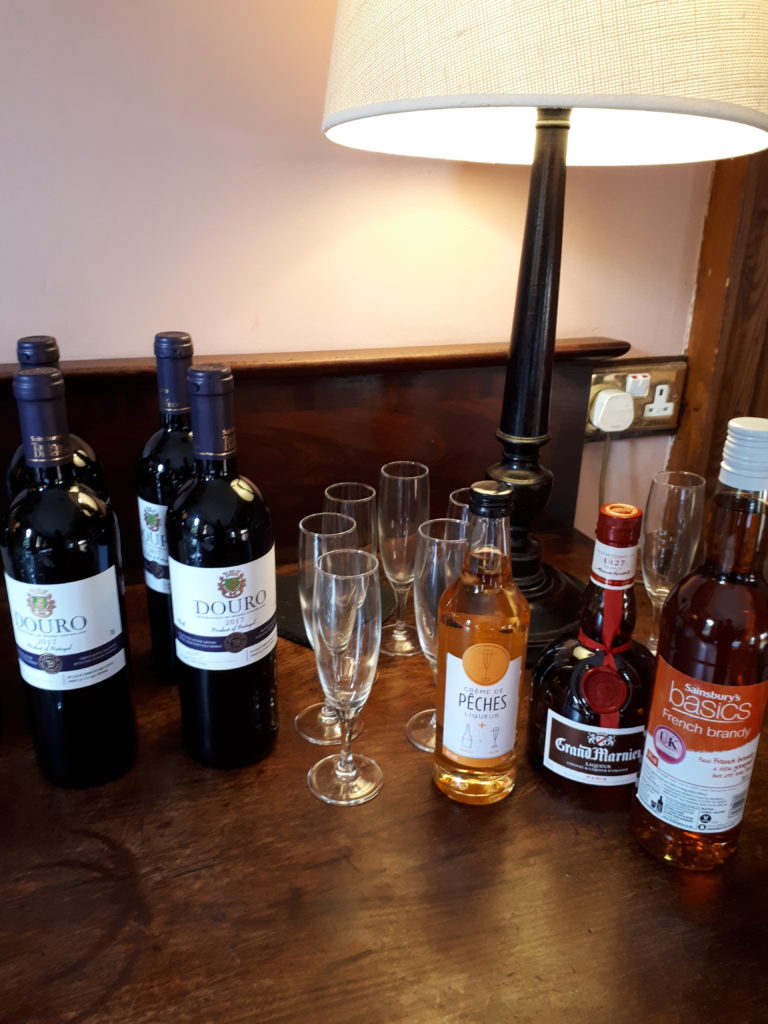
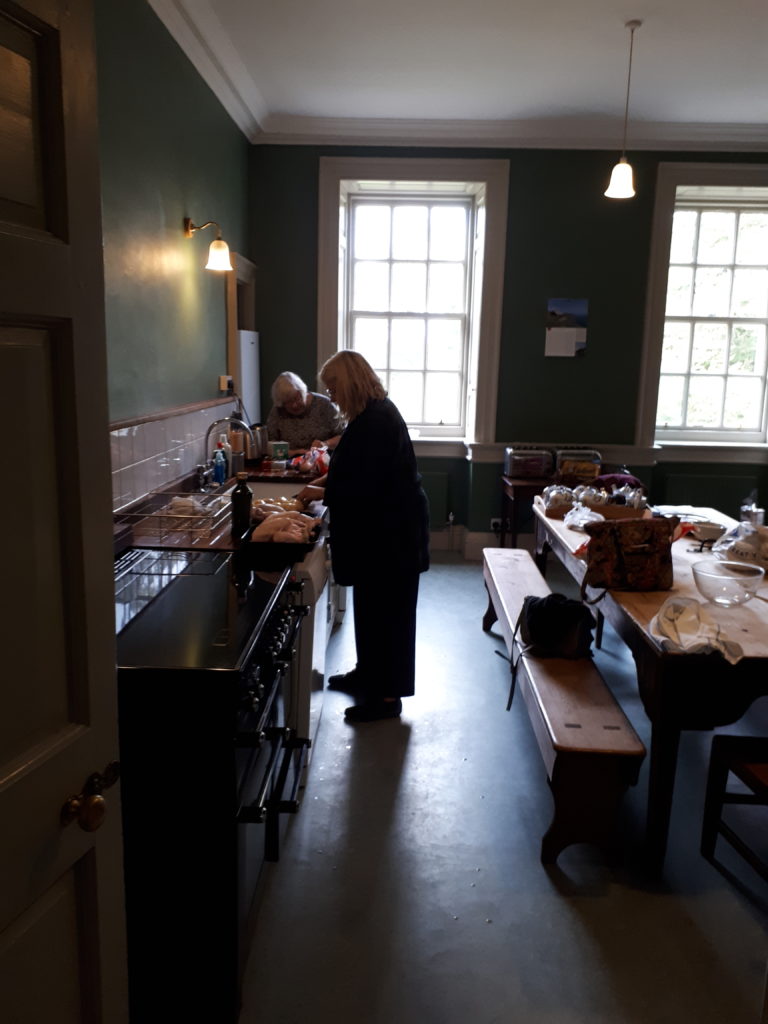
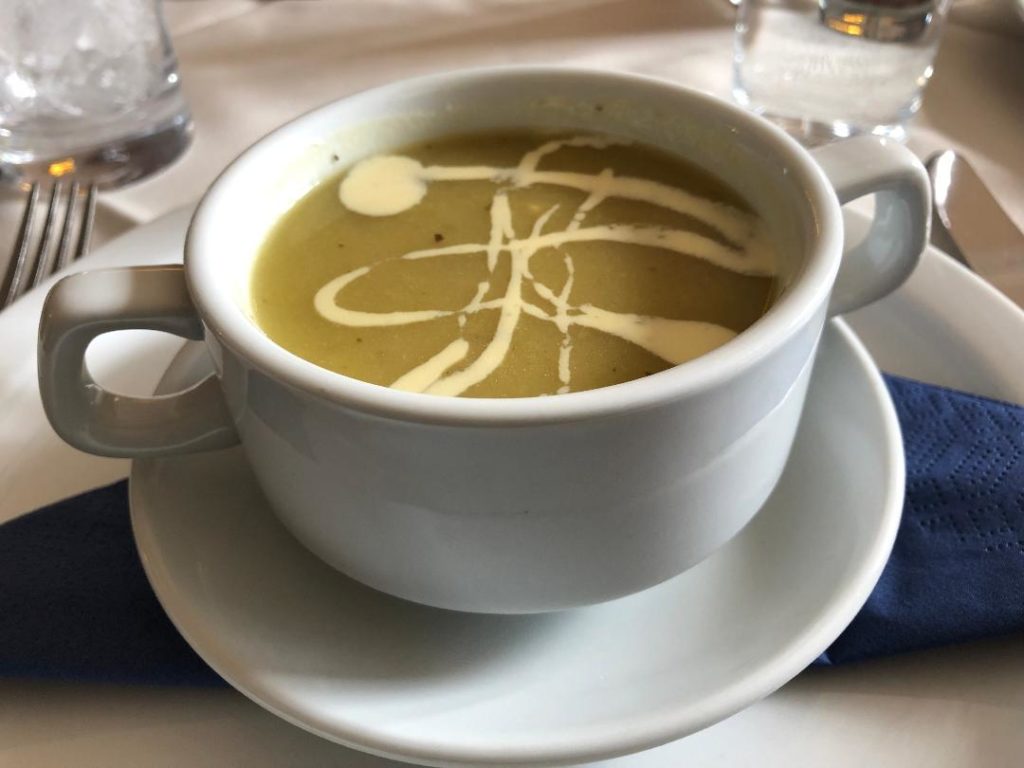
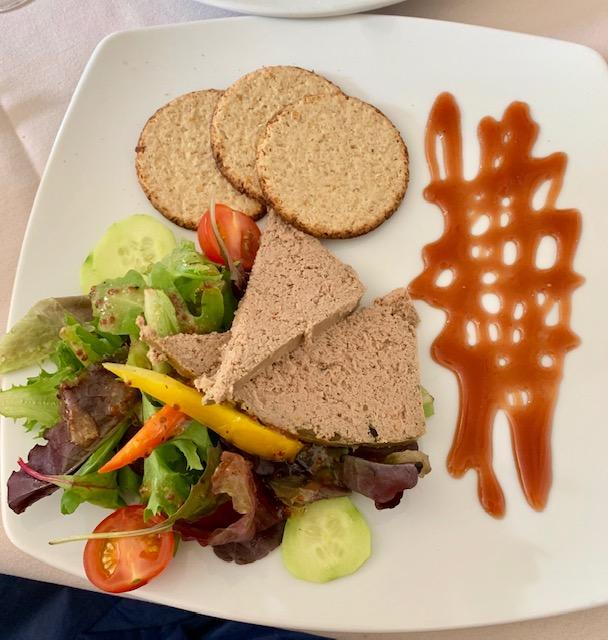


It should be noted that Denise did not taste them all at the same meal.
